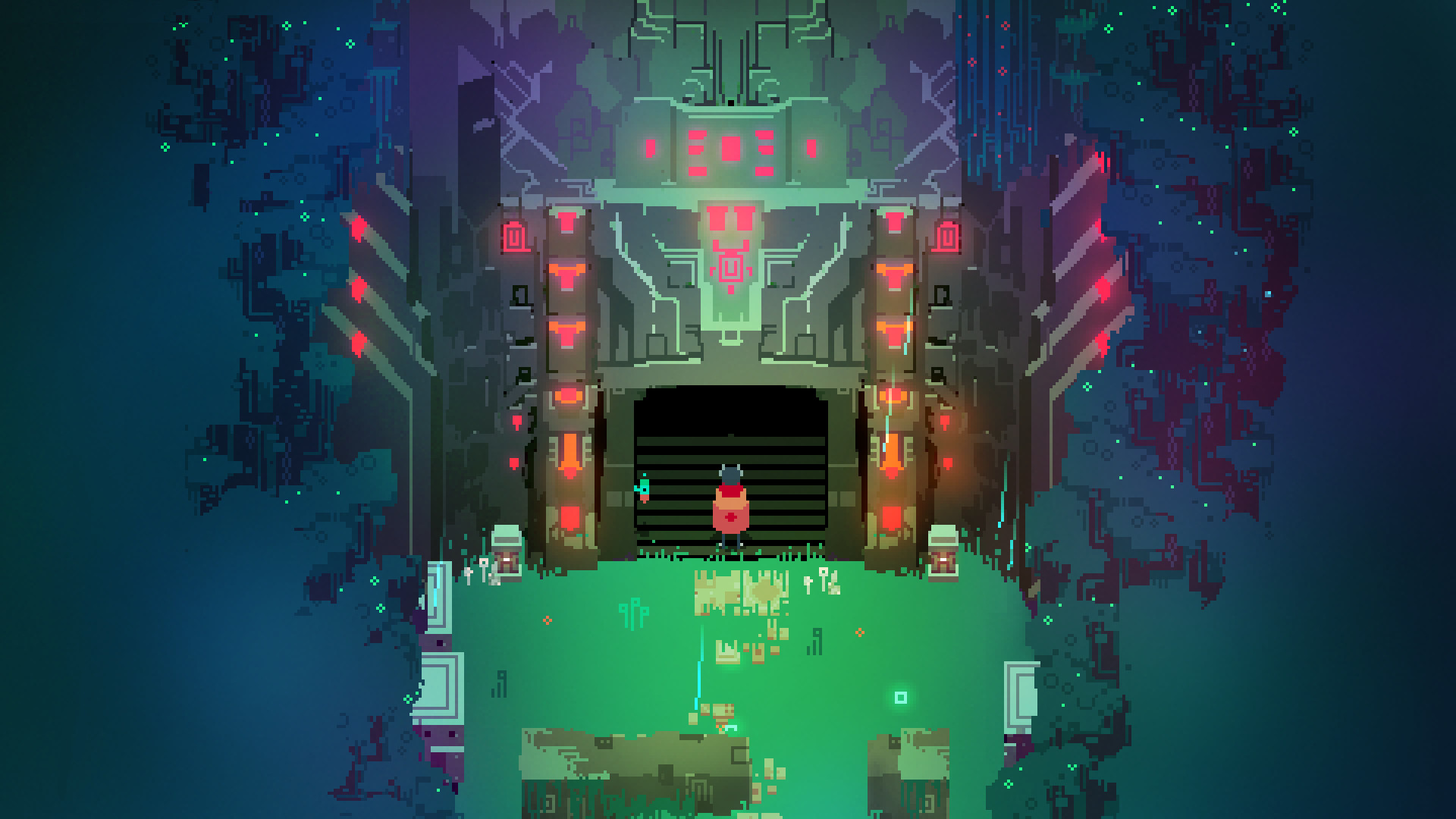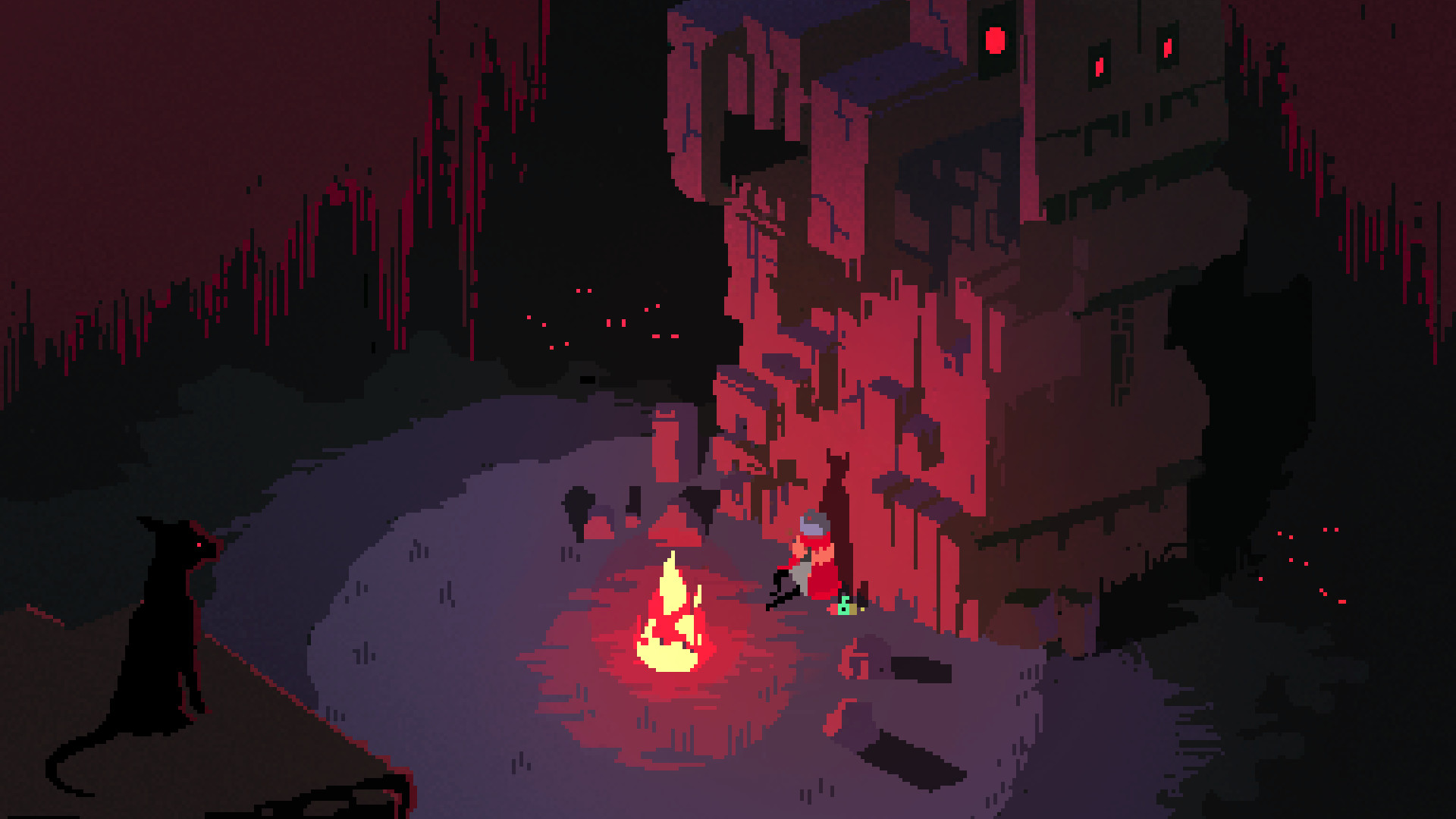Not My Final Form is Julie Muncy’s regular column on how games touch on transitions, manifestations and transformations.
Hyper Light Drifter begins with visions of the past, and it never quite leaves them. They’re hallucinatory images of mechanical giants, angry and screaming. The world collapses; the giants turn into shadows, and the Drifter falls, coughing blood. Then we’re given a glimpse of the new world, where nature has taken over for the machines. An old pathway is covered over with fresh grass.
Videos by VICE

The Drifter appears, against a clouded sky, as a relic, caught between past and present, and then he falls unconscious.
Hyper Light Drifter is a game preoccupied with the process of rebuilding. In the continuum of transformations, the Drifter’s world could be characterized as living in the aftermath of one transformation, or on the cusp of another. They’re working through the wreckage of a cataclysm and trying to build something out of it. Maybe, if they’re lucky, it’ll be a home.
Heartmachine’s first game explores the dichotomy between old and new in a simple way: what’s above ground, and what’s below it.
The surface is in the process of reclamation. After an apocalyptic event, the survivors have built anew, alongside a natural world in bloom. Grass and flowers cover moldering pillars of steel, arcane machines are buried under trees, surrounded by waterfalls, isolated on beautiful cliffs. It’s a world reborn, populated by anthropomorphic animals, a hodgepodge of races and lifestyles, covering over the old like white blood cells converging on an open wound.
Beneath is something different. Even as it slowly collapses, as nature slowly winds its way into its cracks, the old world lives, preserved, underground. Like the new world’s repressed unconscious, those dungeons, laboratories, and mechanical monstrosities remain. Whereas the surface is often rendered with a naturalistic visual palette, these abandoned corridors and bunkers are marked with eerie purples and reds.
This constructed reality remains here, living its last moments even as the civilization that built it is gone.

The Drifter pases between the two planes. He dives into the old places and brings relics back with him; useful pieces of history, power cells, weapons, tidbits of arcane knowledge. His illness—the bloody cough that marks a potential death looming on the horizon—is symbolically connected to the old world, the shadows chasing him tied to the colossi who destroyed the old world and the machine gods who defend its remains. He’s searching for a way out of his predicament, and with it, he seeks out a future for himself. To find a way forward, he dives restlessly into the underground, sifting through the past.
There’s an insight here. Hyper Light Drifter is an illustration of the apocalyptic nature of transformation, and the way our histories, in all their ugliness, can become the building blocks for our futures.
A few months ago, I came out as a trans woman. Around the same time, I played through Hyper Light Drifter. There’s not a direct connection here—I’m not claiming that Heartmachine made a game about gender identity—but there’s a resonance with the way I’ve experienced the changes I’ve gone through.
Having your identity change in such a profound way is a cataclysmic experience. It feels like a breaking apart—of how I used to look, behave, what I did and how I did it. There’s a distinct sense that I don’t quite know who I am anymore.

This experience has some strange effects. Like the Drifter, I’ve found myself turning to the past more and more to understand my future. Old interests, television shows, books, and games I’ve written off since I was a teen have surged back to the forefront of my mind. I’ve found guideposts in them: insights into who I was in formative years that have helped me piece together who I am now. Likewise, I’ve found parts of myself that I don’t like anymore, that don’t seem to fit. I’ve felt—for the first time maybe ever—the security and confidence to throw them out.
Building a new identity, and a new world, requires that sort of integration: between past selves and future selves, between the potentialities we find in the fragments of our histories.
Sometimes we break our own identities to rebuild them better. And sometimes, like the world of Hyper Light Drifter, we find our identities broken by forces we can’t control. The Drifter’s story resonates with that experience in a compelling way, giving mythic shape to a journey to understand, and recontextualize, the messiness of the past.
In doing so, the Drifter hopes to find a cure, and the world he lives in, made anew after its own destruction, looks for a brighter future than the past that left them behind.
More
From VICE
-

Photo: marktucan / Getty Images -

Screenshot: Microsoft


